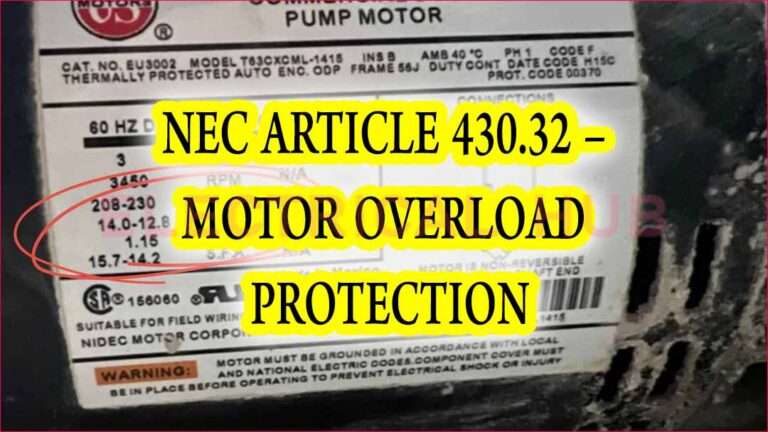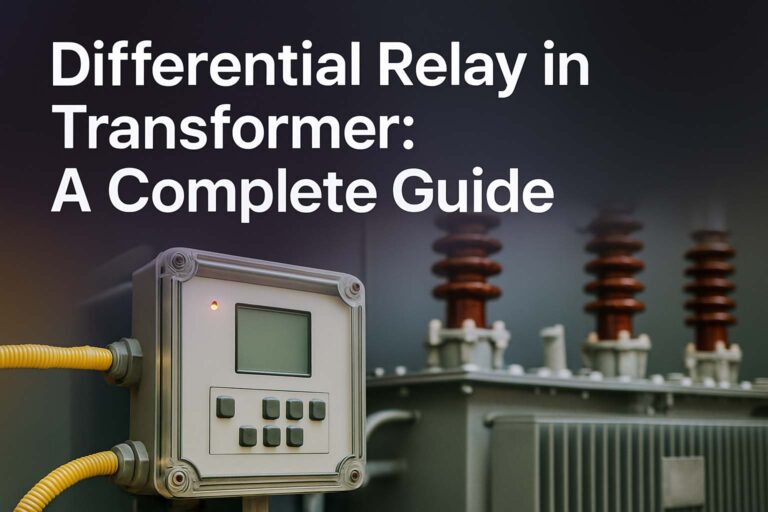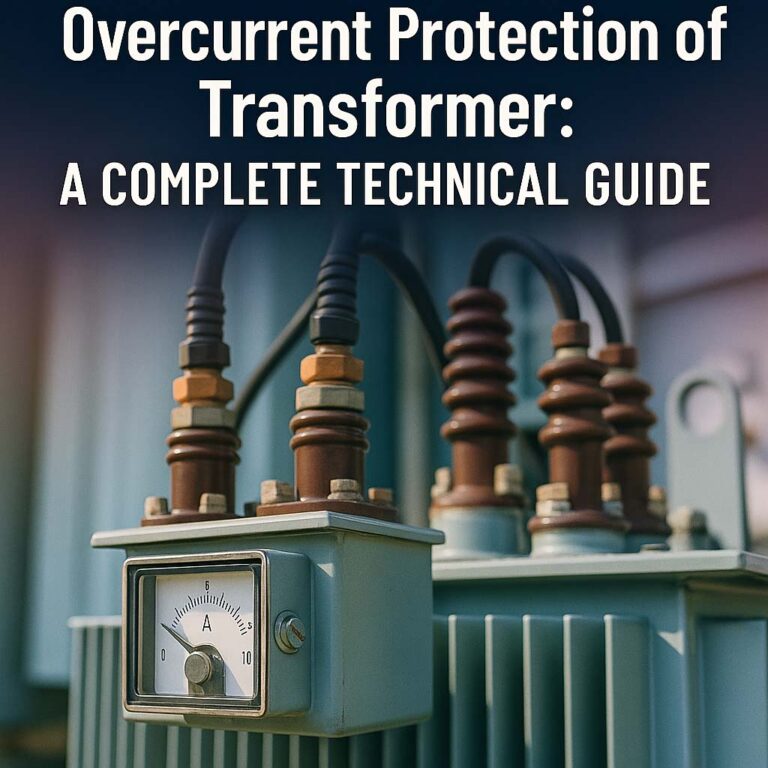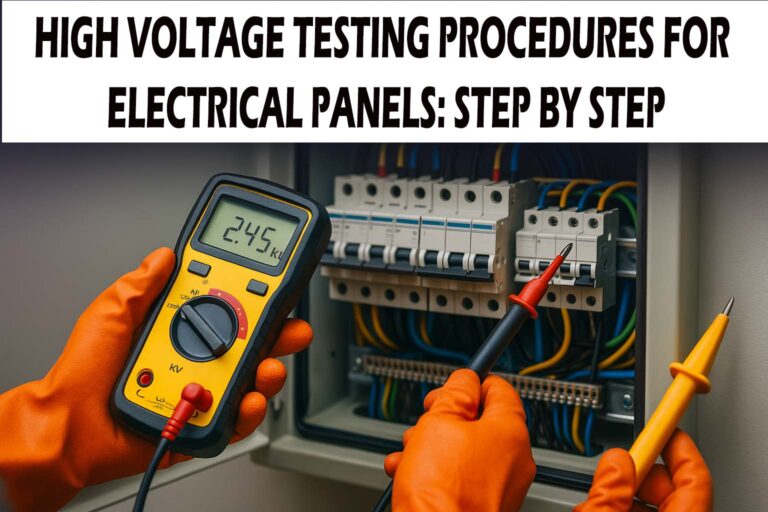Types of Generator Protection Relays
Generators are one of the most crucial elements in power systems. They convert mechanical energy into electrical energy and supply power to homes, industries, and grids. Any damage or fault in a generator can lead to power outages and massive financial losses. To ensure uninterrupted and safe operation, generators are protected using specially designed relays. In this article, we will explore the types of generator protection relays with detailed technical explanations and practical examples.
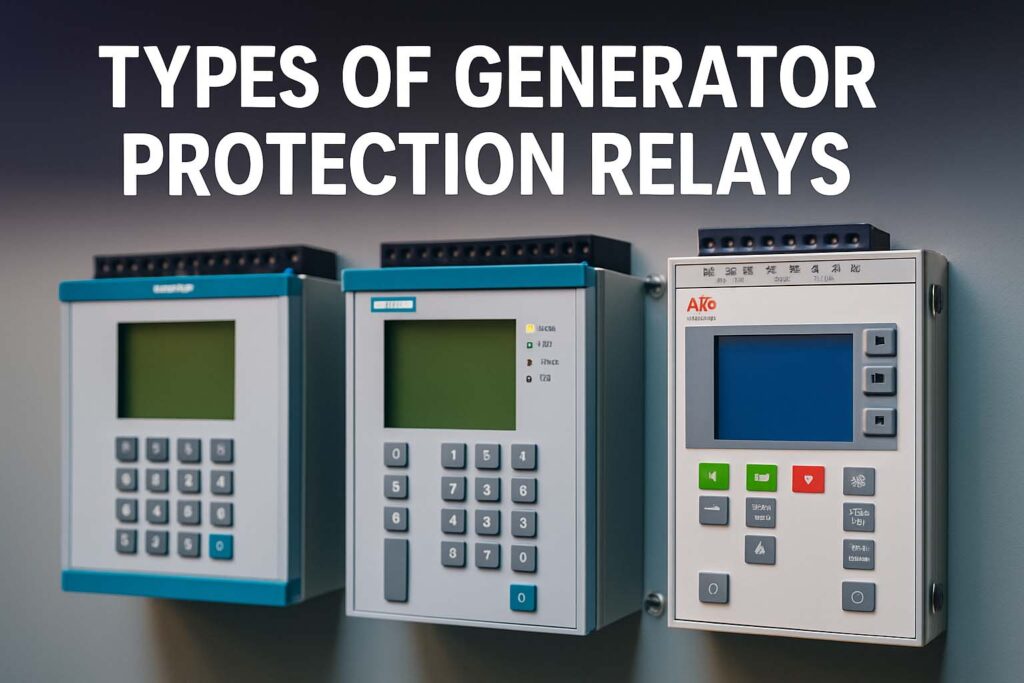
What Are Generator Protection Relays?
Generator protection relays are devices that detect abnormal operating conditions and isolate the generator from the system to prevent damage. These relays act as the first line of defense and are installed with strict adherence to IEC Standard for Protection Relays. They monitor parameters like voltage, current, frequency, temperature, and phase sequence to identify faults.
Each relay has a specific function and is used depending on the generator rating, application, and fault scenario. These relays also support differential relay calculation when used for internal fault detection.
Why Are Protection Relays Important for Generators?
Generators are exposed to several electrical and mechanical stresses. These include overloading, overvoltage, overcurrent, unbalanced load, and internal short circuits. Without proper protection, these issues can cause irreversible damage. Generator protection relays prevent:
- Rotor and stator winding damage
- Insulation failure
- Shaft misalignment and vibration issues
- System-wide cascading failures
Let’s now understand the types of generator protection relays in detail.
Know more about Types of Faults in Transmission Lines
Types of Generator Protection Relays
There are several types of generator protection relays. Each relay has a defined role and application. The most commonly used relays are listed below with their technical purpose.
1. Overcurrent Protection Relay (51, 50)
The overcurrent relay operates when current exceeds a set limit. It is essential in cases of short circuits and overloads. Two types of overcurrent relays are used:
- Instantaneous overcurrent relay (50) – acts immediately without delay
- Time overcurrent relay (51) – operates with intentional delay
These relays detect abnormal current due to external or internal faults and help isolate the generator. This relay is closely related to the Types of Overcurrent experienced in any power system.
2. Differential Protection Relay (87G)
Differential protection is one of the most sensitive forms of internal fault detection. It works by comparing the incoming and outgoing currents in the generator windings. Any imbalance indicates a fault within the zone.
This principle is the same as the differential relay in transformer. However, in generators, the scheme is adapted to protect the stator windings. Differential relays trip only when a true internal fault is present, ensuring high selectivity and speed.
3. Earth Fault Protection Relay
This relay detects insulation failure between the generator winding and earth. It operates at low current values, making it useful for detecting high-resistance ground faults.
Stator earth fault protection can be provided by:
- Residual current detection
- Neutral voltage displacement
- 3rd harmonic voltage-based detection
Early detection of earth faults can save the generator from complete failure.
Know more about What are the Different Types of Faults in a Power System?
4. Reverse Power Relay (32R)
A generator must always supply power to the system. But when the prime mover (engine or turbine) fails, the generator may start drawing power and act as a motor. This phenomenon is called motoring, and it can severely damage the generator.
The reverse power relay senses the direction of power flow. If power starts flowing into the generator, it immediately isolates it to prevent reverse torque on the shaft.
5. Overvoltage and Undervoltage Protection Relays (59, 27)
Voltage fluctuations can cause overheating or underperformance of the generator. The overvoltage relay (59) protects against high voltage, while the undervoltage relay (27) protects against supply dips.
These relays ensure voltage stays within the rated range, protecting both generator windings and connected equipment.
6. Overfrequency and Underfrequency Relays (81O, 81U)
Frequency is an important parameter in generator operation. It must be maintained within ±0.5 Hz of the rated value. Frequency deviations can occur due to sudden load shedding or generator malfunctions.
- Overfrequency relay (81O) trips when frequency rises too high
- Underfrequency relay (81U) trips when frequency drops too low
These relays maintain grid stability and avoid generator stress.
Know more about Types of Alternator Protection
7. Unbalanced Load Relay or Negative Phase Sequence Relay (46)
Unbalanced load conditions produce negative sequence currents in the stator. These currents cause heating in the rotor, which may not be visible but can damage the generator.
The negative sequence relay detects these unbalanced currents and trips the generator before damage occurs. It is especially useful in systems with large motor loads.
8. Rotor Earth Fault Protection
Unlike the stator, the rotor circuit is a DC system and also requires protection. Rotor earth faults can cause poor excitation and field failure. Specialized DC-sensitive relays are used to detect ground faults in the field circuit.
This is important for brushless excitation systems and generators in continuous operation.
9. Loss of Excitation Relay (40)
Excitation failure leads to unstable operation and voltage collapse. The loss of excitation relay detects this condition using impedance measurement. It operates based on the change in apparent impedance of the generator.
Loss of excitation can also result in the generator operating as an asynchronous machine, which is harmful. Quick isolation is needed in such cases.
Know more about Differential Protection of Alternator
10. Out-of-Step Protection Relay (78)
When a generator loses synchronism with the grid due to disturbances, it may swing in and out of phase. If not controlled, this can damage both the generator and grid.
The out-of-step relay monitors voltage and angle changes. It ensures safe disconnection when synchronism is lost.
Summary Table of Generator Protection Relays
| Relay Type | ANSI Code | Function |
|---|---|---|
| Overcurrent Protection | 50, 51 | Detects short circuits and overloads |
| Differential Protection | 87G | Internal fault detection using current balance |
| Earth Fault Protection | – | Detects stator insulation failure to ground |
| Reverse Power Protection | 32R | Prevents generator motoring |
| Over/Under Voltage Protection | 59, 27 | Ensures voltage within limits |
| Over/Under Frequency Protection | 81O, 81U | Maintains frequency range |
| Negative Phase Sequence Protection | 46 | Prevents rotor overheating due to unbalance |
| Rotor Earth Fault Protection | – | Monitors field circuit insulation failure |
| Loss of Excitation Protection | 40 | Protects from voltage collapse and instability |
| Out-of-Step Protection | 78 | Detects loss of synchronism |
Coordination with System Protection
Generator relays are coordinated with system-level relays to ensure selective tripping. They work alongside bus differential protection, transformer relays, and Types of Faults in Transmission Lines. Coordination ensures that only the faulty section is isolated, keeping the rest of the system stable.
Relay settings are calculated using differential relay calculation methods and take into account CT ratios, operating currents, and fault levels.
Know more about CT Polarity for Differential Protection
Conclusion
Understanding the types of generator protection relays is crucial for electrical engineers, operators, and power system planners. These relays form the backbone of generator safety and longevity. Each relay plays a unique role in detecting abnormal conditions and ensuring timely disconnection.
Follow Us on Social:
Subscribe our Newsletter on Electrical Insights to get the latest updates in Electrical Engineering.
#GeneratorProtection, #ProtectionRelays, #GeneratorRelays, #ElectricalProtection, #PowerSystemProtection, #RelayTypes, #ElectricalEngineering, #GeneratorSafety, #DifferentialRelay, #OvercurrentRelay, #VoltageRelay, #BackupProtection, #IndustrialGenerators, #RelayCoordination, #ElectricalSystems


